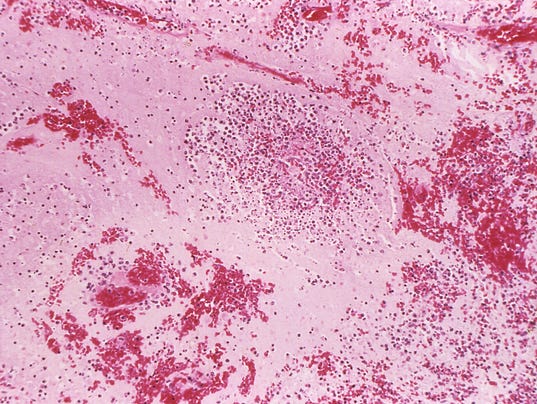| Online: | |
| Visits: | |
| Stories: |

| Story Views | |
| Now: | |
| Last Hour: | |
| Last 24 Hours: | |
| Total: | |
Bubonic Plague aka Black Plague, Confirmed in Michigan While Military ‘Misplaces’ Samples of Black Plague & Other Deadly Pathogens. What Could Possibly Go Wrong? (Video) OYEP

Bubonic Plague aka Black Plague, Confirmed in Michigan While Military ‘Misplaces’ Samples of Black Plague! Something Very Fishy Here
15 Sep 15
The U.S. Army may have also mishandled samples of the black plague which isn’t known to be dangerous, unless you count the time it wiped out 60% of Europe’s entire population.
Bubonic plague case confirmed in Michigan
First ever bubonic plague case confirmed in Michigan
A Michigan resident has contracted the rare, life-threatening bubonic plague — the first documented case in Michigan’s public health history, state officials confirmed.
The Marquette County adult is recovering after apparently contracting the flea-borne illness during a trip to Colorado. Officials are reassuring the public there is no cause for alarm, despite the disease’s connection to the microorganism that caused the Black Death plague in Europe in the 1300s, killing millions and reshaping history.
“It’s same organism but, in this case, the infection resides in a lymph node,” said Dr. Terry Frankovich, medical director for the Marquette County Health Department.
The bubonic plague, in fact, is notably marked by one or more swollen, tender and painful lymph nodes, usually in the groin, armpit or neck.
The Black Death: Bubonic Plague
In the early 1330s an outbreak of deadly bubonic plague occurred in China. The bubonic plague mainly affects rodents, but fleas can transmit the disease to people. Once people are infected, they infect others very rapidly. Plague causes fever and a painful swelling of the lymph glands called buboes, which is how it gets its name. The disease also causes spots on the skin that are red at first and then turn black.
Since China was one of the busiest of the world’s trading nations, it was only a matter of time before the outbreak of plague in China spread to western Asia and Europe. In October of 1347, several Italian merchant ships returned from a trip to the Black Sea, one of the key links in trade with China. When the ships docked in Sicily, many of those on board were already dying of plague. Within days the disease spread to the city and the surrounding countryside. An eyewitness tells what happened:
“Realizing what a deadly disaster had come to them, the people quickly drove the Italians from their city. But the disease remained, and soon death was everywhere. Fathers abandoned their sick sons. Lawyers refused to come and make out wills for the dying. Friars and nuns were left to care for the sick, and monasteries and convents were soon deserted, as they were stricken, too. Bodies were left in empty houses, and there was no one to give them a Christian burial.”
The disease struck and killed people with terrible speed. The Italian writer Boccaccio said its victims often
“ate lunch with their friends and dinner with their ancestors in paradise.”
By the following August, the plague had spread as far north as England, where people called it “The Black Death” because of the black spots it produced on the skin. A terrible killer was loose across Europe, and Medieval medicine had nothing to combat it.
In winter the disease seemed to disappear, but only because fleas–which were now helping to carry it from person to person–are dormant then. Each spring, the plague attacked again, killing new victims. After five years 25 million people were dead–one-third of Europe’s people. Read More




